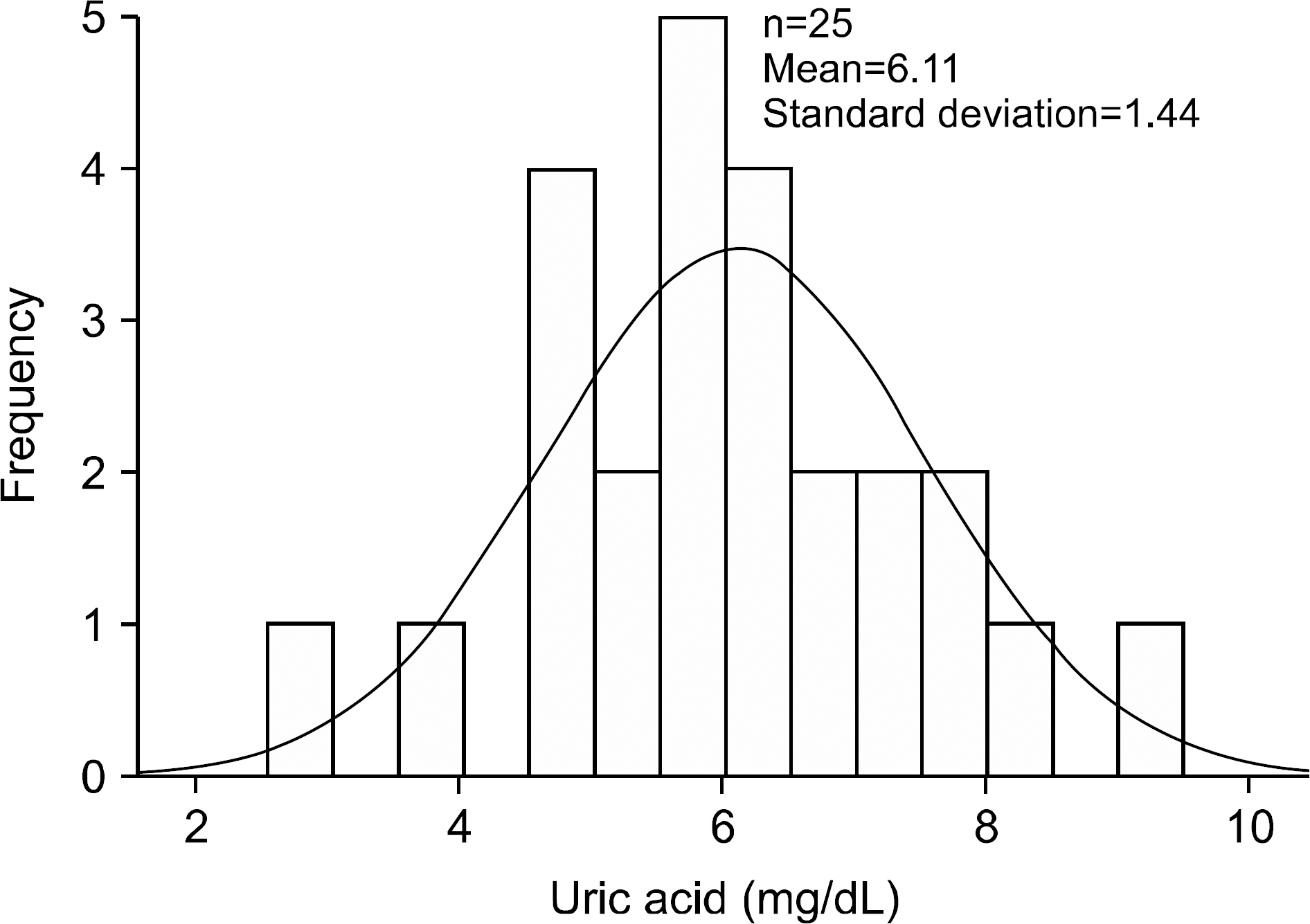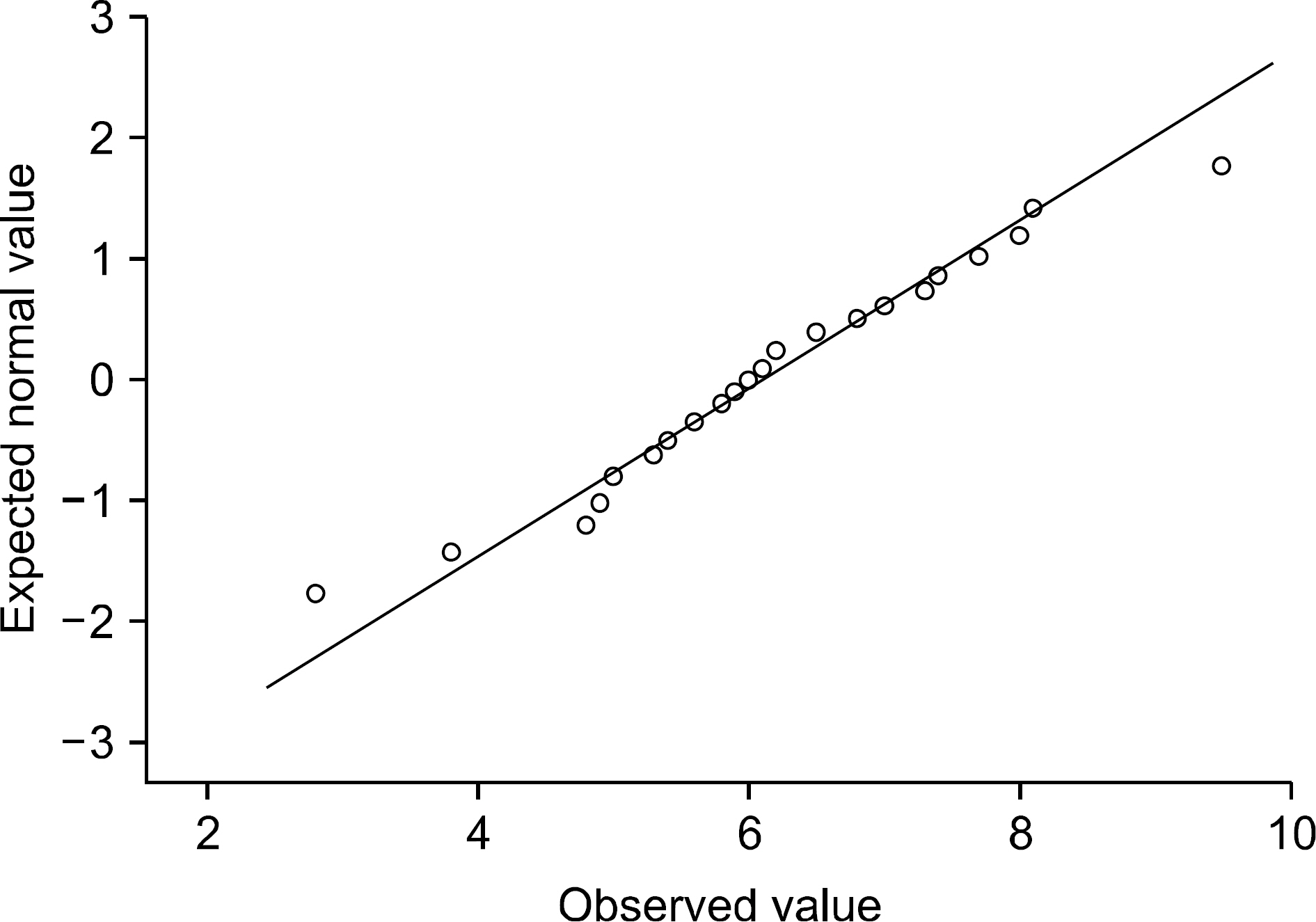J Rheum Dis.
2019 Jan;26(1):5-11. 10.4078/jrd.2019.26.1.5.
Normality Test in Clinical Research
- Affiliations
-
- 1Department of Medical Statistics, Catholic University of Daegu School of Medicine, Daegu, Korea.
- 2Division of Rheumatology, Department of Internal Medicine, Catholic University of Daegu School of Medicine, Daegu, Korea. yourii99@cu.ac.kr
- KMID: 2442029
- DOI: http://doi.org/10.4078/jrd.2019.26.1.5
Abstract
- In data analysis, given that various statistical methods assume that the distribution of the population data is normal distribution, it is essential to check and test whether or not the data satisfy the normality requirement. Although the analytical methods vary depending on whether or not the normality is satisfied, inconsistent results might be obtained depending on the analysis method used. In many clinical research papers, the results are presented and interpreted without checking or testing normality. According to the central limit theorem, the distribution of the sample mean satisfies the normal distribution when the number of samples is above 30. However, in many clinical studies, due to cost and time restrictions during data collection, the number of samples is frequently lower than 30. In this case, a proper statistical analysis method is required to determine whether or not the normality is satisfied by performing a normality test. In this regard, this paper discusses the normality check, several methods of normality test, and several statistical analysis methods with or without normality checks.
Figure
Reference
-
1. Fagerland MW. t-tests, non-parametric tests, and large studies–a paradox of statistical practice? BMC Med Res Methodol. 2012; 12:78.
Article2. Kwak SG, Kim JH. Central limit theorem: the cornerstone of modern statistics. Korean J Anesthesiol. 2017; 70:144–56.
Article3. Kim TK. T test as a parametric statistic. Korean J Anesthesiol. 2015; 68:540–6.
Article4. Chan Y, Walmsley RP. Learning and understanding the Kruskal-Wallis one-way analysis-of-variance-by-ranks test for differences among three or more independent groups. Phys Ther. 1997; 77:1755–62.
Article5. Pereira DG, Afonso A, Medeiros FM. Overview of Friedman's test and Post-hoc analysis. Commun Stat – Simul Comput. 2015; 44:2636–53.
Article6. Schmidt AF, Finan C. Linear regression and the normality assumption. J Clin Epidemiol. 2017; 98:146–51.
Article
- Full Text Links
- Actions
-
Cited
- CITED
-
- Close
- Share
- Similar articles
-
- More about the basic assumptions of t-test: normality and sample size
- Effects of the Stepwise Exposure Treatments Before Freezing on the Survival Capacity of the Frozen-Thawed Mouse Mature Oocytes by Vitrification or Ultra-Rapid Freezing
- Survey of the use of statistical methods in Journal of the Korean Association of Oral and Maxillofacial Surgeons
- Nonparametric statistical tests for the continuous data: the basic concept and the practical use
- Simulation study: the development of a respiratory barrier enclosure with negative pressure and the analysis of its protective effect during intubation



